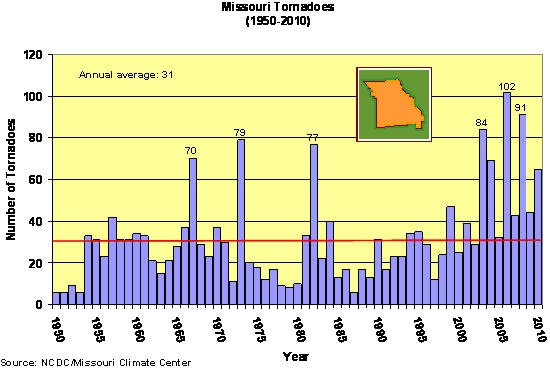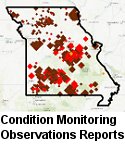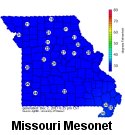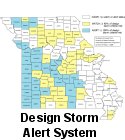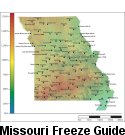
Missouri Tornadoes and Some Facts
Pat Guinan
State Climatologist
Commercial Agriculture/University of Missouri Extension
The clash of air masses occur over Missouri during spring, especially in April and May, as remnants of winter do not want to let go and summer heat is just around the corner. Thunderstorms are common during this transition season and, every once in a while, all the ingredients fall into place for severe thunderstorms that can bring flooding rains, damaging hail, and strong winds. Another more elusive ingredient that can be associated with severe thunderstorms, and also the most terrifying, is the tornado.
Missouri recorded a total of 65 tornadoes in 2010, the 8th highest on record since 1950. On average, the Show-Me state experiences just over 30 tornadoes a year with a little less than 50% of them occurring during April and May. Tornadoes can occur any time of the year and any time of the day but a majority of them (83%) occur between noon and midnight.
The theory that atmospheric variables to the microclimate level may determine whether a funnel eventually drops to the ground is speculatory. It could be a combination of temperature, wind flow, moisture etc. that play key roles. What we do know is that in order to get tornadic thunderstorms, you need a weather pattern that supplies enough moisture, instability, lift and wind shear. And even if you have the necessary ingredients, that doesn't guarantee a tornado. Most strong tornadoes are associated with supercell thunderstorms. Supercells are long-lived severe thunderstorms which have updrafts and downdrafts that remain in balance. The winds are also rotating and rise into the storm called a mesocyclone. Only about 30% or less of supercell thunderstorms produce a tornado.
Generally, tornado alley is a region of the United States more prone to experiencing tornadoes. Specifically this region is found in northern Texas, Oklahoma, eastern Colorado and Kansas, central and eastern Nebraska and the eastern half of South Dakota. However, tornadoes do not discriminate. They have been documented in all 50 states, and no location is "tornado proof". Rivers, lakes, mountains, valleys, cities, cemeteries, islands, are not barriers to tornadoes. They have crossed almost every major river east of the Rockies and traversed the Appalachians and Continental Divide.
Tornadoes have ripped through the central business districts of St. Louis (4 times: 1871, 1896, 1927, 1959), Fort Worth (2000), Salt Lake City (1999), Little Rock (1999), Nashville (1998), Miami (1997) , Houston (1993), Huntsville (1989), Shreveport, Lubbock, Waco, Charleston, Indianapolis, Dallas, Louisville, Washington D.C. and Kansas City.
The notion that mobile home parks are tornado magnets is fallacious. Usually, big news items are ones that involve death and destruction. Mobile homes are not built with the structural integrity found in conventional homes, and they provide no protection from tornadoes. A tornado is more likely to create damage and injury in a mobile home community than in a residential neighborhood with conventional homes. It's the destruction and casualties that become newsworthy and continue to perpetuate the myth.
Most deaths and injuries from tornadoes are from flying debris. If you are in a house go to the lowest possible level and stay away from windows, doors, or outside walls. If a basement is not available, go to the interior portions of the lowest level. Get as many walls between you and the outdoors. Closets, bathrooms, and interior hallways offer the most protection.
For more information on frequently asked questions about tornadoes, including tornado safety, please visit the following link:
http://www.spc.noaa.gov/faq/tornado/index.html
